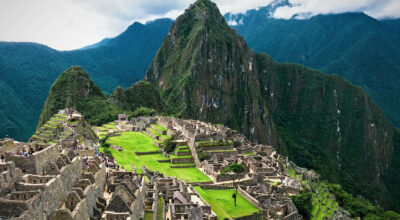Rani Mahal: History About Wonder Of Love

Rani Mahal
Have you reached Rani Mahal?
Rani Mahal is Located on the border of Palpa and Syangja districts, Rani Mahal on the banks of Kaligand is now a tourist destination for Palpa district. On the occasion of Rani Durbar Love Day, which can be reached in three hours on foot and one hour by car from Tansen via Bhusaldanda and Barandi, young people from many districts of Nepal visit Rani Mahal with the aim of making their love more successful. The queen believes that her love will be immortal if her name is written on the wall of the palace.

The foundation stone was laid in 1950 and the construction work of the Durbar Temple, including Patipowwa, was completed in four years. The Queen’s Palace is designed in the Yuan style by a British engineer. Rani Mahal is built in the western style on the huge rock of Kaligandaki river. To the left of the Rani Mahal Durbar, in the Sheetalpati Durbar complex, there are two ponds made of stone carved for fountains and on the right side there is a guard post. There are two temples of Shiva and Ganga on the left side of the palace complex.
On the east side of the palace there is a room for worshiping Khadga Shamsher, a sitting room on the upper floor and other rooms on the middle floor. The garden around Rani Mahal and Rani Pokhari make the palace look attractive. The stone carved from the main entrance of the palace and the steps made of bricks are connected to the river bank of Kaligand. The four-story building of Rani Mahal is 56 feet wide and 112 feet high. The green forest environment around the palace really brings joy to the minds of the tourists visiting Rani Mahal.
During the construction of Rani Mahal, the people used to make bricks, put up walls, transport wood from the forest and cut stones. The Rani Mahal was built from bricks and sal wood made of special materials like lime, surkhi, brick dust etc. Dec. In 1892, a year after his wife’s sudden death, Khadga Shamsher built the palace. Skilled craftsmen were brought from India and abroad to build the palace. Built using special architecture, Rani Mahal is still as strong and charming as ever.Sword Shamsher is written on the brick.

The Taj Mahal in Agra, India is famous in the world today as a symbol of love. The Mughal emperor Shah Jahan had many wives. He loved Mumtaz Mahal, the third of his wives. The emperor built the Taj Mahal in his memory. Construction of the Taj Mahal, which began in 1632, was completed in 1648. The Taj Mahal is considered one of the greatest achievements in the history of Islamic architecture in India. Thousands of craftsmen and painters used many years of time and their unique art to build the Taj Mahal.
Like the Muslim emperors Jahan Shah and Rani Mumtaz, the founders of the Taj Mahal in Agra, India, Rani Mahal was built by General Khadga Shamsher Rana to immortalize the love story of himself and Rani Tej Kumari. It has an inscription on its head which says Rani Tej Kumari Sharanam. Khadga Shamsher was expelled from Arghakhanchi under Palpa Gowda for treason.
After the death of Rani Tej Kumari in 1949, the rites were performed at Kaligandaki. Khadga Shamsher named the place of worship Ranighat and laid the foundation stone of Rani Mahal and even built a horse path from Tansen to reach Ranighat. As Rani Tej Kumari was beautiful and good-natured, Khadga was very fond of her. The Queen’s Palace was built with the finest examples of Western art and craftsmanship. In Rani Mahal, Khadak Shamsher decorated the room with important decorations and furniture.
After the palace was ready, sometimes the queen would spend the night in the palace in the memory of the queen.
Rani Mahal is located 13 kilometers north of Tansen. After Rani Tej Kumari expressed her desire to build a palace in Nepal like the Taj Mahal in India, Khadga Shamsher built Rani Mahal. Built in memory of the queen, the palace is considered a symbol of love. Initially, the palace was named Tejmahal. Later it was called Rani Mahal.

Tourists visiting Rani Mahal are amazed to see Kaligandaki flowing towards the north. In many places of Kaligand, Nagbeli is flowing. Which seems to be watching. The area towards the palace belongs to Palpa district and the area across the river belongs to Syangja district. The village of Satuka in Rani Mahalpari looks just as greedy. Rani Mahal makes the tourists go to Satuka village to spend a night there.
The historic palace, built 120 years ago, is now a tourist destination. Lately, Rani Mahal has turned into a ‘Lovers’ Point’. Similarly, the history of Tansen’s Shitalpati built by Khadag Shamsher is 120 years old. He had built a coolhouse in Tansen to gather air and gather troops. Built in 1990 and 1995 during the reign of Khadga Shamsher, Kulo still exists in Palpa. Tourists nowadays come to see this historic stream built to supply water to Cherlung and Artunga.
Tansen is an ancient and beautiful hill town. Named after the Magar language, Tansen means Northern Settlement. This place is dominated by Magars and has its own language, religion, culture and history. The Magars are believed to have been the first caste to settle in Tansen. About 600 years ago, present day Nepal was divided into various small states. At that time, this place was also known as 12 Magarat. After Magar, the Newar community became the majority here. Due to which, Tansen’s way of life and culture is similar to Kathmandu.
Tansen, located on the southern slope of the Mahabharata region, is a unique example of Nepali art and culture. There are many places for tourists to visit in Tansen where there is a beautiful combination of ancient Newari houses with art and stone paved roads. After reaching Tansen, the place to visit is Srinagar Hill. Tourists enjoy the natural beauty seen after climbing the hill. From Srinagar, Dhawalagiri in the west and Ganesh Himal in the east can be observed.
A beautiful gift of nature requires a stay of at least seven days to visit the tourist sites around Tansen. While climbing the beautiful Srinagar hill, you can enjoy the quiet forest, pine trees and red gourds blooming. The destination of the hill is Srinagar Park. Heading east of the park, you can reach the Buddhist stupa in half an hour. The stupa, built with the help of a Thai monk, has beautiful carvings of elephants and monkeys. The context of these paintings is linked to the life of Lord Buddha.The ancient belief that monkeys and elephants helped Lord Buddha meditate in ancient times is reflected in the paintings here.

Apart from Srinagar, Palpa Tansen, known as Dhakatopi and Karuwa, has many tourist attractions. Tourists also visit Tansen Durbar, Sheetalpati, Virendra Poomalbari and Anand Vihar. Moreover, the tourists who reach Tansen to reach Satyawati, Sitakunda, Suke and Nandatal in Palpa district extend their stay.
Tourists visiting Palpa enjoy visiting Tansen, Ridi, Ranighat, Ramdighat, Nuwakot Gadhi and Ribdikot. Palpa is considered to be the best district in Nepal. The ecologically fertile fields like Madi, Rampur, Hugi, Argeli, Kachan, Darpuk, Sardeva and Purvikhola of the Dandakada river and river banks of the Chure and Mahabharat ranges are also in the seropher of Palpa district.
Ujir Shamsher has ordered the construction of a temple of Bhagwati in celebration of the victory of the battle with the elders in Tansen.
Historic sites like Shitalpati’s main gate, Amar Narayan’s temple, Tansen Durbar, made of the largest wood in Asia, have become places of study, research and sightseeing for tourists visiting Palpa Tansen. Palpa district is considered to be very rich in art and culture. Located in Gokhunga, Bhuvanpokhari in West Palpa, the historic Rainadevi is a famous religious site not only in Palpa district but also in Gulmi and Arghakhachi.
Located at a distance of 38 km from Tansen, the temple of Rainadevi is at the forefront of ancient, religious, historical, tourist and archeological significance. The worship of Kalika, Sorathi dance, Saranya, Malshri, Balun and Khyali dance performed at midnight on the day of Maha Ashtami of Dashain is considered to be the main attraction of Rainadevi. After visiting Rani Mahal and the sites around Tansen, tourists can extend their stay and reach Ruru area i.e. Redi. On the occasion of Maghe Sankranti, a religious fair is held in Reedy.
Pilgrims flock to the Ruru area, which is recognized as a religious shrine, to bathe in Kaligandaki and visit the Rishikesh deity. Religious fairs have been held in Ruru area since ancient times in the form of Jethi, Miley and Kanchi Sakranti. Thousands of devotees from Palpa, Gulmi, Arghakhachi, Syangja, Rupandehi and other districts come to bathe in the Ruru area. The confluence of Gulmi, Palpa and Syangja districts is known as Kaligandaki.

There is a religious mythology that the name of Ruru region is derived from the name of Ruru Kanya. There are dozens of temples in Rishikesh, Bhrigutungeshwar, Ruru Kanya, Gulfu Vadar, Anandakuti Cave, Taldovan Cave and other places associated with religious beliefs. The historical significance of Rambhadevi in Tahu of East Palpa also makes it a study material for tourists visiting Palpa. In East Palpa, which is predominantly Magar, the importance of Rambhadevi and the religious beliefs of all castes and tribes have become the center of faith.
Although foreign tourists rarely visit Gadakot, Jhiruwas, Mityal, Sahalkot, Archle Khaliwan, Galdha, Darcha and Rampur in East Palpa, the people of the area also worship Rambhadevi as a symbol of their family goddess. According to the history of Khadga Shamsher’s conspiracy to become Shri 3, Jang Bahadur Kunwar, who became the Prime Minister and Commander-in-Chief at the age of 29 on September 20, 1903, got the title of Rana. Shri 3 Maharaj also became.
By 1942, the Rana family had split into Singh and Shamsher Khalak.After killing Ranadwip Singh, Shamsher Khalak’s eldest 32-year-old Bir Shamsher became Shri 3. Mahila, 26, became Dambar Hajuria Jarnail and Sahila, 24, became Khadga Senapati. Randev and Chandra Shamsher became the Commanding Journal of West, East and South respectively. That is why it is called 42 year festival. Veer trusted Khadga and handed over the responsibility of all the deployments of the Kingdom of Nepal. As Khadga Shamsher took charge of all the deployments of the Kingdom of Nepal, B.C. In 1960, Khadak Shamsher’s passion for the post began to grow.
He started conspiring to capture His Majesty’s position and the Kathmandu Valley. The conspiracy was discovered by the then Prime Minister Shri 3 Chandra Shamsher. Chandra Shamsher deposed Khadak Shamsher and sent troops to Palpa to take the troops into his own hands. When Khadak Shamsher came to know about that, Khadga Shamsher fled to India with the money from the government treasury.
As a result, Khadga Shamsher’s conspiracy to become Shri 3 failed. Don’t worry about what gift to take after visiting Palpa? The Dhaka hat is in demand not only in Nepal but also abroad. . For men, Dhaka hats and for women, Dhaka-based clothes can be returned with the symbol of visiting Palpa.
FAQ’S
Who built Rani Mahal of Palpa?
Who built Palpa Palace?
What is Palpa famous for?






